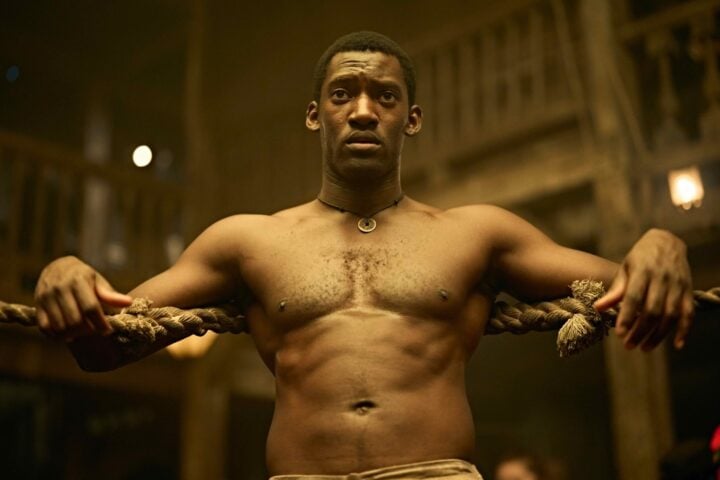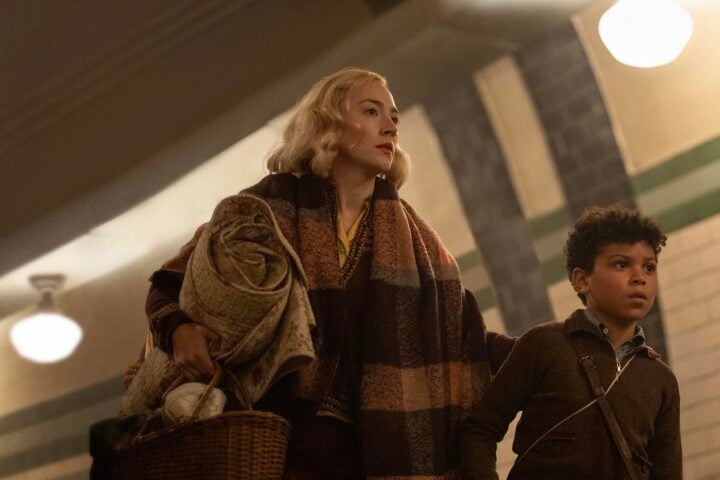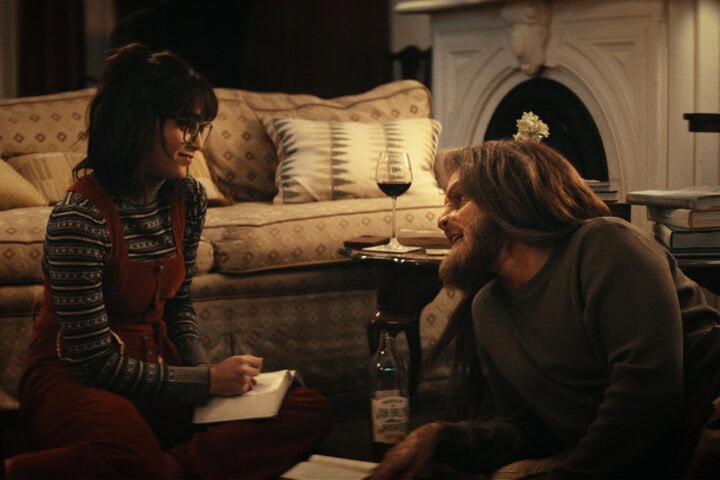Regardless of their underlying raison d’être—Sony’s Hail Mary attempt to share the Spider-Man film rights with Disney—the Venom films have been some of the most engaging superhero movies of the post-Avengers: Endgame landscape, if for no other reason than because of their refreshing lack of pretension. Kelly Marcel, making her directorial debut with Venom: The Last Dance after co-writing the first film and writing the second, keeps to the series’s simple, darkly humorous approach, and, if anything, streamlines things even further. Where the first two films occasionally stumble between trying to maintain momentum and attempting to flesh out their characters, The Last Dance runs through the majority of its exposition in brief, easily digested info dumps amid its constant forward motion.
Consider how swiftly the film introduces Knull, the god-king of the symbiote species who lies imprisoned by his own creations. In order to free himself and wreak havoc on the universe, Knull needs a codex encoded in Venom’s DNA. To find and retrieve this codex, the King in Black sends Lovecraftian amalgamations of tendrils, clawed limbs, and teeth through the cosmos to track the signal that Venom emits like a homing beacon. Already trying to avoid being detected by the U.S. government after the events of Let There Be Carnage, the symbiote Venom and his put-upon human host, Eddie Brock (Tom Hardy), must now evade the xenophage monsters who are hunting Venom and the other symbiotes that have landed on Earth.
Thus established as a chase movie, The Last Dance hits the ground running, or at least stumbling, as Hardy continues to play Eddie as a man every bit as diseased by Venom as he is empowered by the alien possessor. With his sunken eyes and sharp stubble, Eddie looks nearly as bad as the clothes he appears to have worn for weeks. Despite ostensibly being at last settled into his new normal, Eddie is the furthest thing from a sleek, cool antihero; instead, he’s a raving lunatic who sometimes does “good” only in the deeply ambiguous sense of dispensing street justice via feeding criminals’ heads to his molecularly tethered life partner.
If the first film in this series, in which the hyper-violent yet childishly naïve Venom initially invades Eddie’s mind and body, is a buddy movie with heightened special effects, the sequel, in which the pair bicker like an old married couple and even separate before reuniting in mutual understanding, is a comedy of remarriage. But the reference points are less generic in The Last Dance, which suggests a garish collision between Thelma & Louise’s pals-on-the-lam bonding experience and Starship Troopers’s maximalist horror-comedy.
When one of the xenophage creatures shows up and begins to tear its way toward Venom, it consumes unfortunate bystanders in grisly fashion with its rows of teeth. Here and elsewhere, it boggles the mind how the film slipped past the MPA with only a PG-13 rating. Naturally these are CGI-heavy scenes, but Marcel favors surprisingly long takes that let you see just how nightmarish the fighting between humans, symbiotes, and xenophages gets.
As the film progresses, it consistently escalates the stakes and scale of its action, which doesn’t devolve into incomprehensible CG murk as it hurtles toward the climax. And despite featuring more symbiotes than either of the previous movies, the monsters are more visually distinctive here and have more of a personality, informed by both the quickly but coherently drawn behavioral qualities of the humans who host them and the visual designs of each alien.
There are a few elements that veer a bit too sharply from the established status quo of this series with no explanation. The first two films established other symbiotes as marauding would-be conquerors seeking to make Earth their home and buffet, which makes it odd to see them here abruptly recast as frightened refugees fleeing the annihilating wrath of their maker.
Still, The Last Dance nails the shift thanks largely to the supporting turns from Juno Temple as an idealistic research scientist who, contrary to expectation, isn’t punished for her belief in the possible benefits of alien contact and Chiwetel Ejiofor as a special ops soldier who’s validated for his innate distrust of and shoot-on-sight attitude toward extraterrestrials. But the star of the show remains Hardy, who’s slowly fashioned this series’s unorthodox, unglamorous take on the superhero film into an oddly sentimental depiction of a deep friendship between an otherwise unremarkable man and the gooey, goofy alien monster who lives inside of him.
Since 2001, we've brought you uncompromising, candid takes on the world of film, music, television, video games, theater, and more. Independently owned and operated publications like Slant have been hit hard in recent years, but we’re committed to keeping our content free and accessible—meaning no paywalls or fees.
If you like what we do, please consider subscribing to our Patreon or making a donation.




